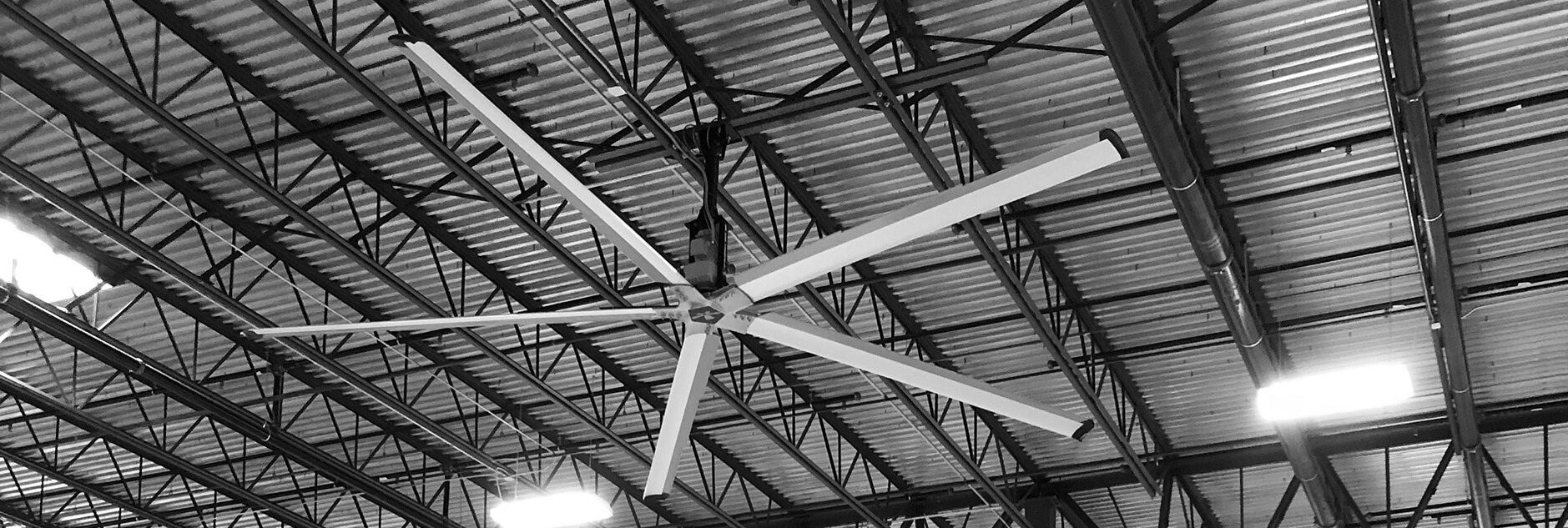Tips For Installing An HVLS Fan


You’ve explored options and decided that an HVLS fan is a great choice for your facility. Congratulations! But before you can start enjoying the improved comfort and savings your Go Fan Yourself HVLS fan will bring, there’s one more step to take: installing it.
Like any large piece of mechanical equipment, it’s important to think ahead and take all necessary measures to install your fan correctly. Here is what you need to consider when planning a fan installation, to be sure that your new HVLS fan delivers the highest possible value.
HVLS Fan Installation Checklist
- Decide who will install your fan. Did you know that Go Fan Yourself provides HVLS fan installation services? If you choose to use our authorized installation crew, your job is hands-off easy — just give us a call and we’ll handle all permitting and inspection, and get your fan safely and correctly installed and running at peak efficiency as soon as possible. If you have the time and expertise to do it safely in-house or prefer to work with a local contractor, rest assured that each fan comes with detailed installation instructions (and you can always contact us for support).
- Check codes. Before installing your HVLS fan, you’ll want to review local building codes and plan for compliance.
- Map your airflow. Take the time to think through how your fan will impact airflow through the area. Are there any obstacles or oddly shaped areas that may be difficult to reach? What heat-generating machinery or building processes might you need to take into account? Will you need to rearrange anything in the room or alter fan placement to optimize results?
- Plan for integration. Do you have an existing building management system (BMS)? VividAir fans integrate easily with building automation systems for optimal performance and energy savings. It’s a good idea to carefully plan how best to integrate your fan(s) with your existing system, to avoid having to re-configure everything later.
- Consult your structural engineer. HVLS fans are heavy. In most cases, it’s a good idea to have a structural engineer inspect your site to be sure your building can handle the load, as well as approve your mounting method. Your engineer can also be a helpful ally in determining fan placement for optimal airflow.
- Consult your electrician for inspection and permitting. HVLS fans require installation by a licensed electrician, who will ensure that wires and breakers are sized correctly, and all necessary permits are properly completed.
- Finalize fan placement and mounting system. Working through steps 2-5 above will help you determine the ideal spot to mount your fan. This will determine the best mounting bracket or system to use. It’s very important to be sure your mounting system is appropriate for the site; contact us for help if you need assistance.
Once you’ve completed all the prep work, installing is typically a straightforward endeavor. If you are doing it yourself or hiring an independent contractor, be sure to use proper equipment and safety protocols. If you need assistance, call us and we’ll take care of everything for optimal speed of installation and quality assurance. Either way, once your fan is up and running, you’re sure to enjoy the cool rewards for years to come!
